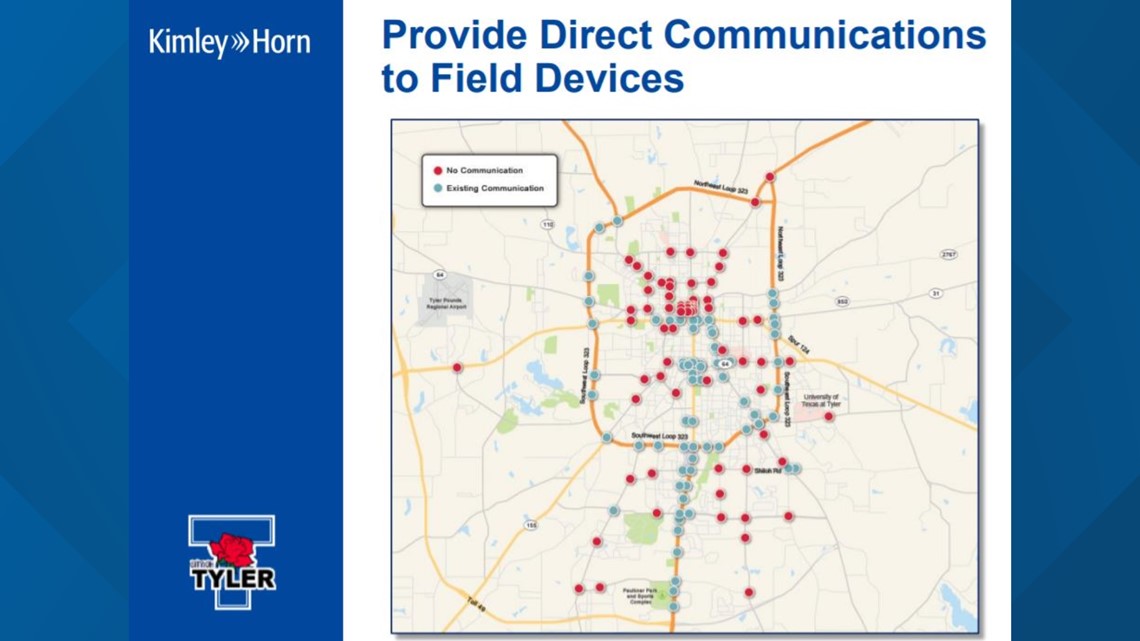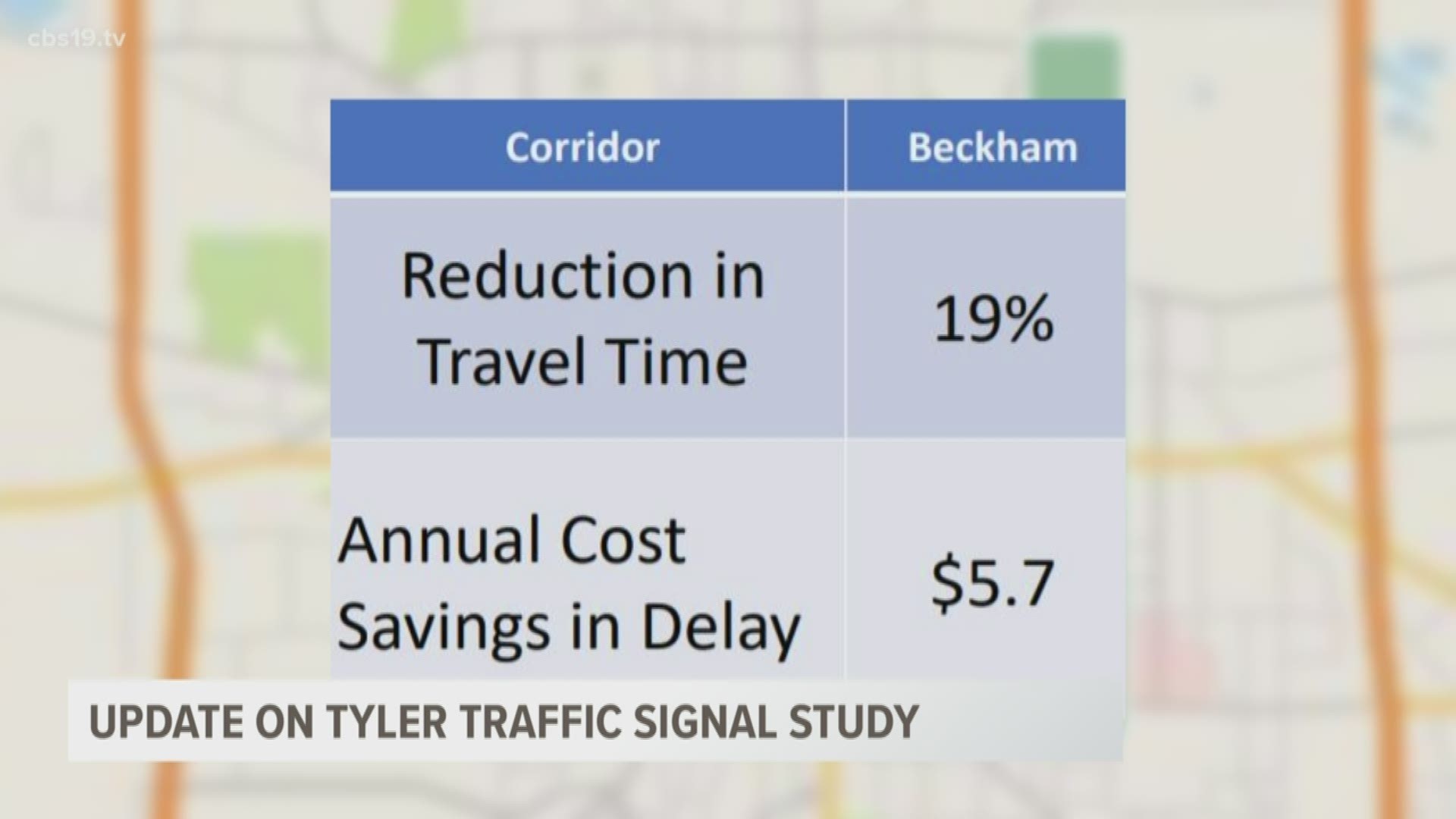TYLER, Texas — Drivers in Tyler are familiar with the frequent stop-and-go traffic due to the stop lights.
It is an issue that Mayor Martin Heines says the city has been working to fix.
In April, the city council approved a year-long traffic signal study with Kimley-Horn to identify ways to fix the issue.
During Wednesday’s meeting, an update on how things were going was presented, as well as the results of a pilot program.
There are 137 lights in the city. Out of those, none have backup batteries, half were installed before 1982 and most have communication troubles, which means the city is not notified when a light is not working.
“So if you're sitting there at a red light and the other people have a green light, and there's no cars coming either way, they're like, 'Why am I stopped when there's no traffic,'” explained City Council member Don Warren. “That's because that's got that red dot on that map.”


Three trouble areas in the city were chosen for a pilot program. Those locations were:
- South Beckham Avenue between Gentry to Fifth Street
- Broadway Avenue from Loop 323 and Chimney Rock Drive
- Loop 323 between Broadway Avenue to Old Bullard Road
“To demonstrate what can be achieved with good practices, signal optimization so that we can kind of get everybody on the same page,” said a representative for Kimley-Horn during the presentation. “Looking at the traffic lights, appropriately calculating how much time is needed to move the traffic demand, and then also identifying what the offset should be, which is how much travel time is required from one traffic signal to the next.”
A spokesperson for the city of Tyler said only the South Beckham lights were implemented the pilot program.
The results for that street include a lower amount of travel time for both northbound and southbound drivers. Travel time was down by an average of 19%, saving people $5.7 million in the value of time lost from being stuck in traffic.
"You know, if you can improve 15% to 22%, just on what we're doing in the pilot program, and then just think what we can do once we put something in place long term, it can be even better than that," Warren said.
The study is on hold until the beginning of 2020.
In January, things will pick back up with an alternative analysis as well as training for signal technicians and high technology applications. It is anticipated to be completed by the beginning of May.

